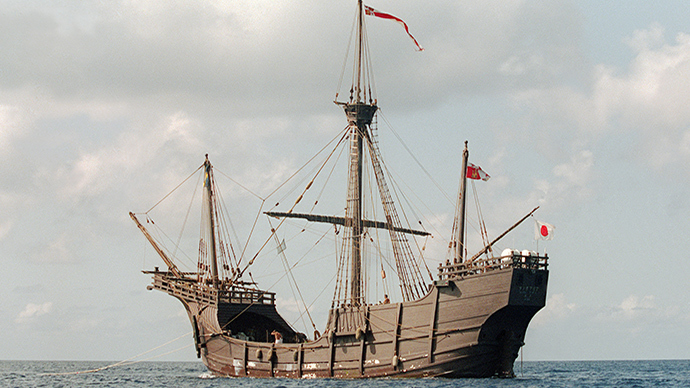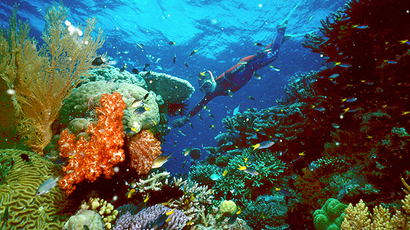The wreck of Columbus’ Santa Maria may be found after 500 years

The wreck of the famous flagship Santa Maria, aboard which Christopher Columbus discovered America, has reputedly been found off the coast of Haiti, an underwater discovery that may be one of the most important in history.
“All the geographical, underwater topography and archaeological evidence strongly suggests that this wreck is Columbus’ famous flagship, the Santa Maria,” Barry Clifford, a top underwater archaeological explorer and the leader of an expedition to the site, told the Independent.
Clifford and his team have carried out non-invasive survey work by measuring and photographing the possible site of the ship which was wrecked in 1492, more than 500 years ago in the Caribbean Sea.
The research at this exact location started back in 2003 when a separate group of archeologists suggested a possible site of Columbus’ fort relatively nearby. Clifford’s team also conducted the research in 2003. However, the scientists didn’t realize the probable identity of the Santa Maria at that time.
Clifford has also examined information found in Christopher Columbus’s diary to work out where the wreck should be.
In order to find the location of the famous ship, Clifford used underwater photographs from previous expeditions. The researchers also examined the data from marine magnetometers, side-scan sonar equipment and divers, used in previous expeditions by Clifford’s team.

They investigated more than 400 seabed anomalies off the northern coast of Haiti and narrowed the search down to the tiny area where the wreck has been found, according to the scientists.
“I am confident that a full excavation of the wreck will yield the first ever detailed marine archaeological evidence of Columbus’ discovery of America,” said Clifford
The researchers are sure about the place, saying that the location is an exact match in terms of historical knowledge about the loss of Santa Maria. Another indicator of the ship which discovered America is the footprint of the wreck, represented by a pile of ship’s ballast.
“We’ve informed the Haitian government of our discovery – and we are looking forward to working with them to ensure that the site is fully protected and preserved. It will be a wonderful opportunity … to preserve the evidence and artifacts of the ship that changed the world,” Clifford said.
According to the scientist, his team needs to carry out a detailed archaeological excavation of the wreck.
“Ideally, if excavations go well and depending on the state of preservation of any buried timber, it may ultimately be possible to lift any surviving remains of the vessel, fully conserve them and then put them on permanent public exhibition in a museum in Haiti,” he added.
Clifford is best known for discovering the remains of the wrecked ship Whydah, the only verified pirate vessel ever found in US waters, in 1984. Lost in a storm off Cape Cod in 1717, the one-time slave vessel has yielded more than 100,000 artifacts so far.

Meanwhile, Professor Charles Beeker of Indiana University, who accompanied Clifford’s recent expedition to Haiti, says that it “warrants a detailed scientific investigation to obtain diagnostic artifacts.”
“There is some very compelling evidence from the 2003 photographs of the site and from the recent reconnaissance dives that this wreck may well be the Santa Maria,” he added.
However, according to Professor Beeker who is Director of the University of Indiana’s Office of Underwater Science, “an excavation will be necessary in order to find more evidence and confirm the identity of the ship.”
The Santa Maria was the largest of the three ships used by Christopher Columbus in his first voyage to America. Little is known about the actual dimensions of this vessel, because no documents or illustrations have survived from its era.
It drifted onto a reef off the present-day site of Cap-Haïtien, Haiti, on December 25, 1492, and was abandoned or lost, according to various records. Realizing that the ship was beyond repair, Columbus ordered his men to strip the timbers from the ship, which were later used to build a fort which he called La Navidad (Christmas).
Since the 19th century, various replicas of the famous ship have been publicly commissioned or privately constructed.













